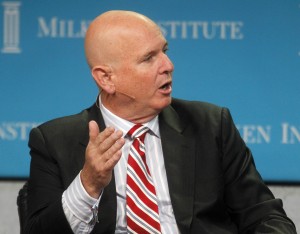
- Market dynamics favor GPs, causing progress to be reversed or endangered
- Dodd-Frank, ILPA, SEC scrutiny helped LPs gain ground on compliance, fairness
- CalSTRS well under its 13 pct target allocation to PE
Limited partners are at risk of losing ground in the fight for improved compliance and transparency, according to California State Teachers’ Retirement System.
“Market dynamics have shifted some power back in favor of general partners and in some instances this has caused some progress to be reversed or become endangered,” CalSTRS staff wrote in a recent memo.
CalSTRS did not provide specific details. Pension staff could not be reached for comment.
Major private equity firms had to register as investment advisers following the passage of the Dodd-Frank act in 2010. With registration came regulatory scrutiny, which culminated in several SEC enforcement actions relating to PE firms’ failure to disclose certain fees and expenses.
That scrutiny, along with greater coordination among LPs through groups like the Institutional Limited Partners Association, resulted in “significant strides” in compliance, fairness and transparency among LPs and GPs, CalSTRS staff wrote.
Several sources told Buyouts that private equity general partners gained leverage in negotiating more favorable fund terms in recent years.
A wave of distributions over the past half-decade hastened demand for new investments in private equity. As investor demand climbed, blue-chip fund managers pushed back on certain terms even as they raised larger, more ambitious funds.
Advent International closed its new fund on a $13 billion hard cap even after it dropped a clause precluding the GP from collecting profits before fund investors received a minimum return.
Vista Equity Partners made significant changes to its new fund’s key-man provision, leaving LPs with no recourse should founder Robert Smith depart the firm, Buyouts reported.
Furthermore, a growing number of managers now charge fees, or plan to charge fees, on previously cost-free co-investments, according to research published by placement agent Triago.
These challenging market dynamics will be a factor as CalSTRS commits fresh capital to private equity in the new fiscal year (starting July 1), according to the staff memo.
The value of the retirement system’s PE portfolio has fallen after several years in which capital calls outpaced distributions, according to its annual business plan, and new commitments haven’t kept pace.
The $188.8 billion retirement system held just 8.9 percent of its assets in private equity as of May 31, more than 4 percentage points off its 13 percent allocation target.
Committing more to private equity in the current environment could present problems as distributions begin to fall and PE firms face a more challenging deal environment, CalSTRS staff wrote in a 2016-2017 business plan included in July meeting materials.
“Past experience … dictates that it is also unwise to be fully swept away by the momentum of rising valuations, shortened fund raising cycles and rapidly increasing fund sizes,” staff wrote, echoing market commentary made in a similar memo last year.
CalSTRS valued its PE portfolio at $17.6 billion as of March 31, roughly 93 percent of which was managed by external managers, its business plan showed. The portfolio was netting a 12.96 percent internal rate of return and 1.55x multiple as of the same date.
Action Item: CalSTRS’s business plan: http://bit.ly/29m0vyq
Christopher Ailman, chief investment officer of California State Teachers Retirement System, speaks during a lunch panel, “Europe at a Crossroads,” at the Milken Institute Global Conference in Beverly Hills, California, on May 2, 2012. Photo courtesy Reuters/Fred Prouser


 If you do not receive this within five minutes, please try and sign in again. If the problem persists, please
email:
If you do not receive this within five minutes, please try and sign in again. If the problem persists, please
email: